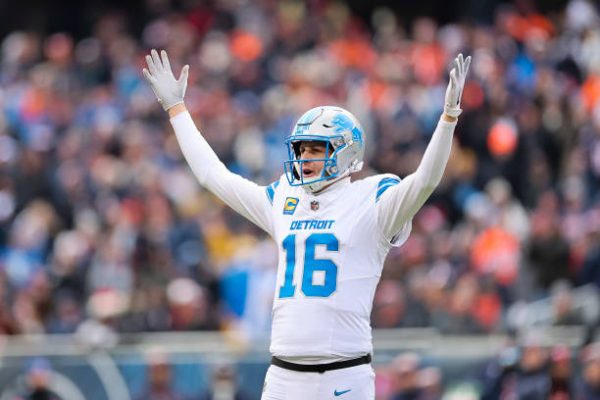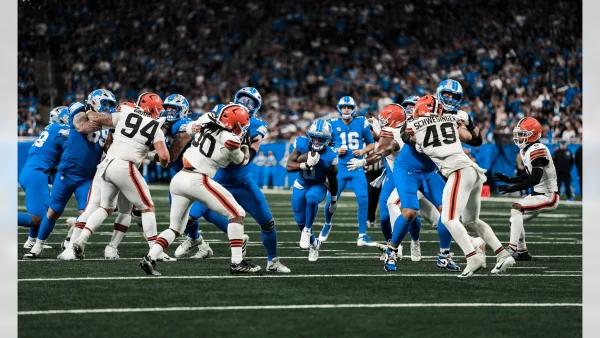Social media and athletes in the modern age
Less than ten years ago, the ‘holy grail’ for many sports fans was to acquire the signature of their favorite player. Supporters would wait in long lines at shows, camp out at team hotels, or lean over railings and security to try and garner that personal connection with a star athlete.
Now, in today’s digital age, fans still chase after that with sports stars, but do so behind their keyboard. A retweet or mention on Twitter has become this generation’s version of an autograph. While a star player’s John Hancock will still fetch a pretty penny on eBay, the advent of social media has created the idea that a personal connection between a fan and player can forever be immortalized by a single click, negating the actual need for a face-to-face encounter.
On a college level
Twitter has successfully allowed for fans and players to share an unprecedented level of communication. For college athletes, this new platform has proven to be both a valuable tool and potential hazard as supporters are now given a whole new level of access to these amateurs.
Neal Ruhl is the Social Media Coordinator of the Oakland University Athletic Department. His position did not even exist three years ago, but it is quickly becoming a necessity. As many Grizzlies are becoming more accessible to their fan base, Ruhl is responsible for monitoring those interactions and making sure that everything runs smoothly.
“The Oakland’s men’s basketball team is very involved in social media, as are a great number of athletes at Oakland University,” Ruhl said. “The impact is very positive in a multitude of ways. The use of social media allows the players to reach a broader audience. Twitter is a tool that can raise awareness not only of their game as individuals, but also promote the Oakland brand.”
Ruhl also serves on the play-by-play crew at both the men’s and women’s basketball games, giving live updates and observations courtside from his personal account. In addition to following everything that OU players say on the social media sites, he has helped various members of the athletic staff become active in the latest form of communication.
“I am expected to give Oakland Athletics a presence in the social media landscape. I monitor the tweets of everybody we follow, with players, media, and sponsors,” Ruhl said. “I have to keep my thumb on the pulse of everything that is affiliated with Oakland. I try to make Oakland a destination in the ever changing climate of social media.”
One player that Ruhl follows is Oakland star Travis Bader. The junior guard led the nation in three pointers this season, and he also is one of the leading tweeters on the basketball team.
“I usually like to go on (Twitter) after a game and just thank everyone for their support,” Bader said. “I like to show that I am thankful and appreciate them. I find that it is really cool that they take the time to do that.”
Keeping it positive
The challenge for Ruhl is not what Bader, or any other Oakland athlete might say when thanking fans after a win. Problems can arise when athletes vent anger at coaches, fans, or teammates that can reflect poorly on the team, or even worse, when an athlete might say something controversial or use inappropriate language.
“I tell them to treat their social media like their own personal brand,” Ruhl said. “Be engaging, be funny if possible. Try to keep it positive if you can. Above all, remember that you represent Oakland University both on and off the field or court. Take that responsibility seriously.”
Being a relatively new form of communication, there are not many examples of a firm code of ethics to regulate the world of social media, especially on the college level.
While Oakland does not have a specific set of rules regarding social media, Ruhl addresses all of the players before the season, preaching common sense and to always think before pressing the send button. Ruhl discourages messages that are detrimental to the school and program, and injury information is also advised not to be shared.
“We hear the basic stuff, especially the things to not put on there,” Bader said. “It really is common knowledge, but it doesn’t restrict me in anyway. I still have fun being able to talk to fans.”
Bader’s teammate, redshirt junior Duke Mondy agreed. The point guard said that he loves to use his account to interact with his fans, but he makes sure to be careful with his profile.
“You definitely have to watch what you say, because really anybody can see that, and you never know who may be looking at any time,” Mondy said. “Once you put it out there, it is online forever, and you never know if a kid may be looking up to you.”
While several incidents have resulted in college athletes being suspended around the country, Ruhl is very thankful to report that no problems have arisen with an Oakland player.
“The athletes here at Oakland have done a terrific job,” Ruhl said. “They take their role as a student-athlete very seriously and recognize the fact they can use social media to promote not only themselves, but the university as well.”
Changing times
While most members of the Oakland athletic department have been on Twitter for a while, one of the last holdouts to jump on Twitter was men’s head basketball coach Greg Kampe.
In his 29th season, Kampe finds Twitter to be a necessary evil in today’s world. He tells his players that they should always think about the fans that follow them, and to never use words that are regrettable. For the longest time, the coach said he would never have one, but he recently caved and finally joined the site.
“I want the players to understand that they are directly marketing themselves with everything they say,” Kampe said.
While his Michigan State Spartan counterpart views Twitter as a distraction, @KampeOU is simply trying to keep up with the times.
“I don’t see it as a distraction, I see it as the year 2013,” Kampe said. “It is a changing world, but is how the kids want to talk to each other now.”
Contact Contributing Reporter Tim Pontzer via email at [email protected]




